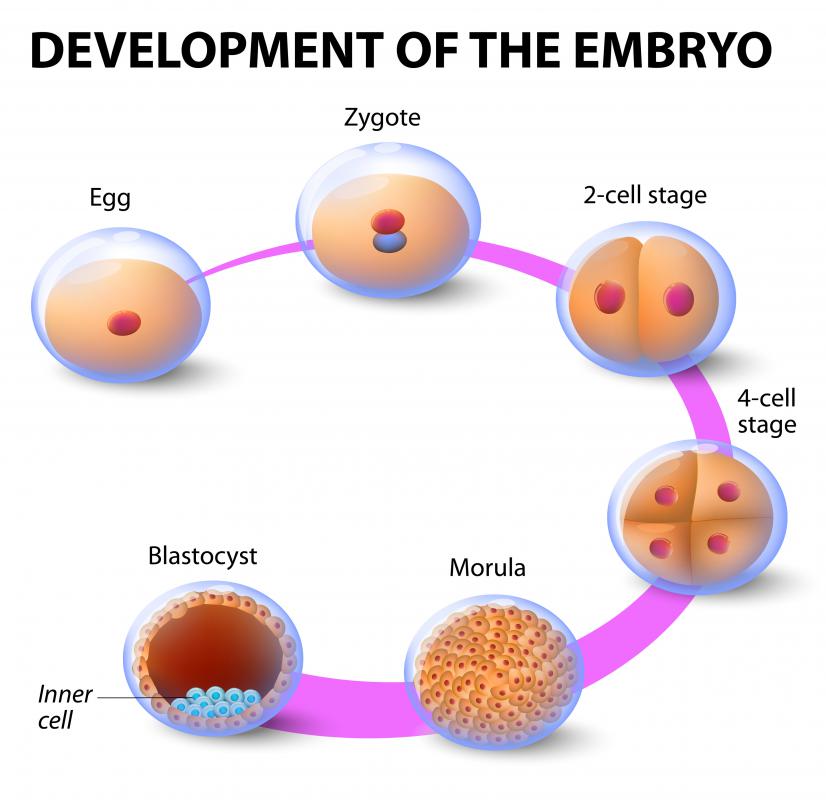At WiseGEEK, we're committed to delivering accurate, trustworthy information. Our expert-authored content is rigorously fact-checked and sourced from credible authorities. Discover how we uphold the highest standards in providing you with reliable knowledge.
What is Assisted Hatching?
Assisted hatching is a procedure which is sometimes used during in vitro fertilization (IVF) to increase the chances that the embryo will implant. Not all patients are good candidates for assisted hatching, and the data is not entirely solid as of 2009, but using assisted hatching does seem to increase success rates for patients who have had trouble getting pregnant with IVF in the past. Using this procedure will add to the overall IVF costs because it requires extra work in the lab.
In the early stages of development, the embryo is covered with a thin shell known as the zona pellucida which acts to protect the developing embryo. Before it can implant, the embryo must break through of the zona pellucida. Fertility specialists have noted that if the zona pellucida is especially thick or if the embryo does not appear very robust, sometimes the embryo cannot implant successfully. In assisted hatching, the embryo is given a little help to increase the chances that it will successfully break free of the zona pellucida and implant.

With assisted hatching, once an embryo is selected for transfer, the zona pellucida is thinned or breached. The shell is left intact so that it will protect the embryo until it is ready to break free, and the thinning or breaching of the shell will allow the embryo to easily separate so that it can implant. Assisted hatching is done with the use of micromanipulators, with the embryo being carefully held in place while the thinning or breaching is performed with a tool, laser, or special fluid.

There are some risks to assisted hatching. It is possible to damage the embryo, and the risk of identical twinning appears to increase when this technique is used. For this reason, the procedure may not be recommended if a couple is down to their last embryo. Patients must also consider the twinning risk when they decide whether or not assisted hatching is right for them.

Several reasons may lead to a recommendation that a couple consider assisted hatching. Age is one factor; if the woman is over 37, assisted hatching can be a good idea. Another factor can be high levels of follicle stimulating hormone (FSH), or past trouble with implantation during IVF cycles. Finally, if the doctor believes that the embryo may be weak or that the zona pellucida is unusually thick, this procedure made be recommended.
AS FEATURED ON:
AS FEATURED ON:













Discuss this Article
Post your comments